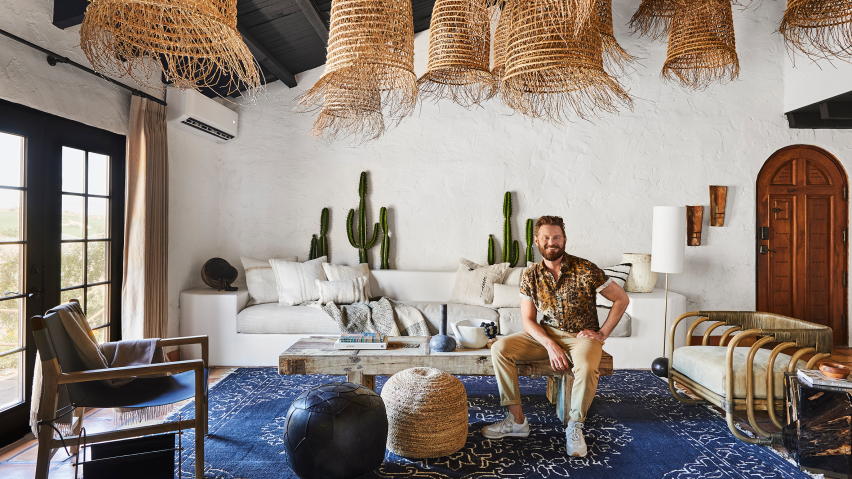Queer Eye star Bobby Berk recently quit the hit show to run his interior design studio full-time. In this exclusive interview, he discusses how his TV experiences have shaped his approach.
Having announced in November 2023 that he would be leaving his role as the Netflix reality series' interior design expert after eight seasons, Berk has since leaned full-time into work through his eponymous studio – as well as being a Dezeen Awards judge.
"I think the show really did make me more confident in using colour"
"Designing for TV is very different from designing for a 'real world' project," Berk told Dezeen. "The timeline is so much quicker [in TV], and you're also creating a space that has to work in person and translate on screen."
Berk described how his work on Queer Eye – which sees the five expert presenters make positive changes to an ordinary person's lifestyle – required him to adapt his usual design style in order to satisfy the needs of the show's makeover subjects.
"Design-wise, my work on Queer Eye often featured much more colour and pattern than I typically use," he explained. "I wanted to reflect the personalities and desires of the inhabitants, and that often meant going bold."
In contrast, Berk describes his personal style as a "mix of organic, modern, classic, Spanish, and minimal with a mostly neutral colour palette" that leans towards working with natural materials and geometric shapes.
He cites his LA-based studio, in a recently renovated 1970s Spanish-style home, as the project that most accurately reflects his own style.
Rooms filled with a palette dominated by black, white, marble and wood detailing house the designer's headquarters and various home products.
Nevertheless, he reports that Queer Eye has opened him up to experimenting with bolder tones and patterns.
"I believe we should let the work speak for itself"
"I've brought in hits of colour in a handful of projects since then, and I think the show really did make me more confident in using colour – especially in wallpaper, unique paint treatments, and murals," he said.
Berk argues that his style isn't definable in a single term or phrase – but acknowledges that certain aspects of his taste were cemented by moving from New York to California, after a childhood spent in the Bible Belt.
"It really all developed over time, there wasn't an exact moment my style all came together," he said. "Rather, I feel all my past experiences and influences blended into a more discernible look and feel when I moved to California."
Los Angeles continues to have the greatest influence on his work, ahead of the various locations Queer Eye filmed – including Atlanta, Philadelphia, New Orleans and a spin-off season in Japan – or Portugal, where the designer now lives part-time.
"Of all the places I've lived and travelled, Los Angeles is the city that continues to drive my creativity and help me to see through fresh eyes," he said.
"It's a very inspiring place on many different levels, and there is such a legacy of incredible architecture and design."
Design as a tool for improving well-being has remained at the centre of Berk's work before, during and after Queer Eye, and he explored the theme further in his book Right at Home: How Good Design Is Good For The Mind, published last year.
"From the very beginning of my career, I've known the power that design can have to change your life," he said.
"That will always be the throughline of my work, to use design as not just a way to make a beautiful room, but as an invaluable tool for improving wellness and mental health."
While he admits being in the spotlight can be both "challenging" and "flattering", Berk is keen for his design work to be judged on its own merits.
"Being cast on a television show has obviously changed my life in incredible ways and afforded me so many amazing opportunities," he said. "Part of that also means being a public figure and having people be interested in more than just your design work."
"Sometimes it's challenging, sometimes it's flattering, but it's what I signed up for," he added. "I also don't think we should put celebrity designers on a pedestal or value their work above other working designers who may not have had the same exposure."
"I believe we should let the work speak for itself, and give space to anyone that is talented and creating compelling design."
The photography is by Sara Ligorria Tramp.
Dezeen In Depth
If you enjoy reading Dezeen's interviews, opinions and features, subscribe to Dezeen In Depth. Sent on the last Friday of each month, this newsletter provides a single place to read about the design and architecture stories behind the headlines.

